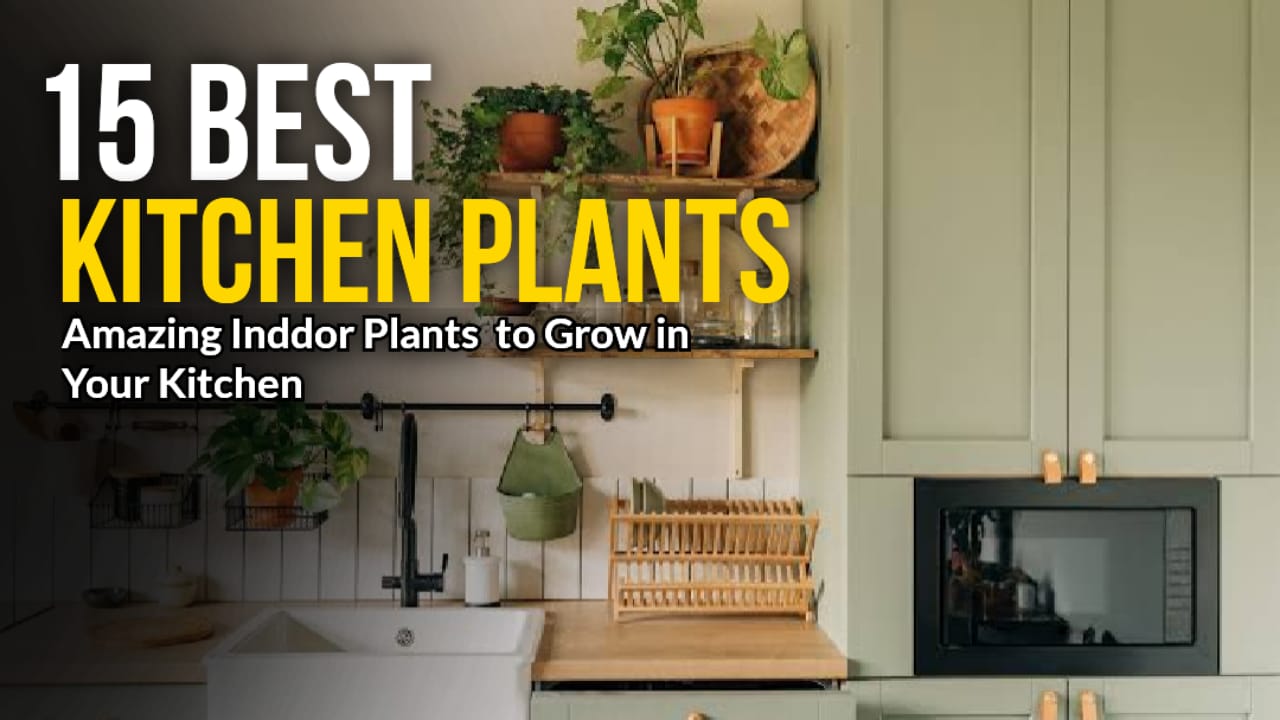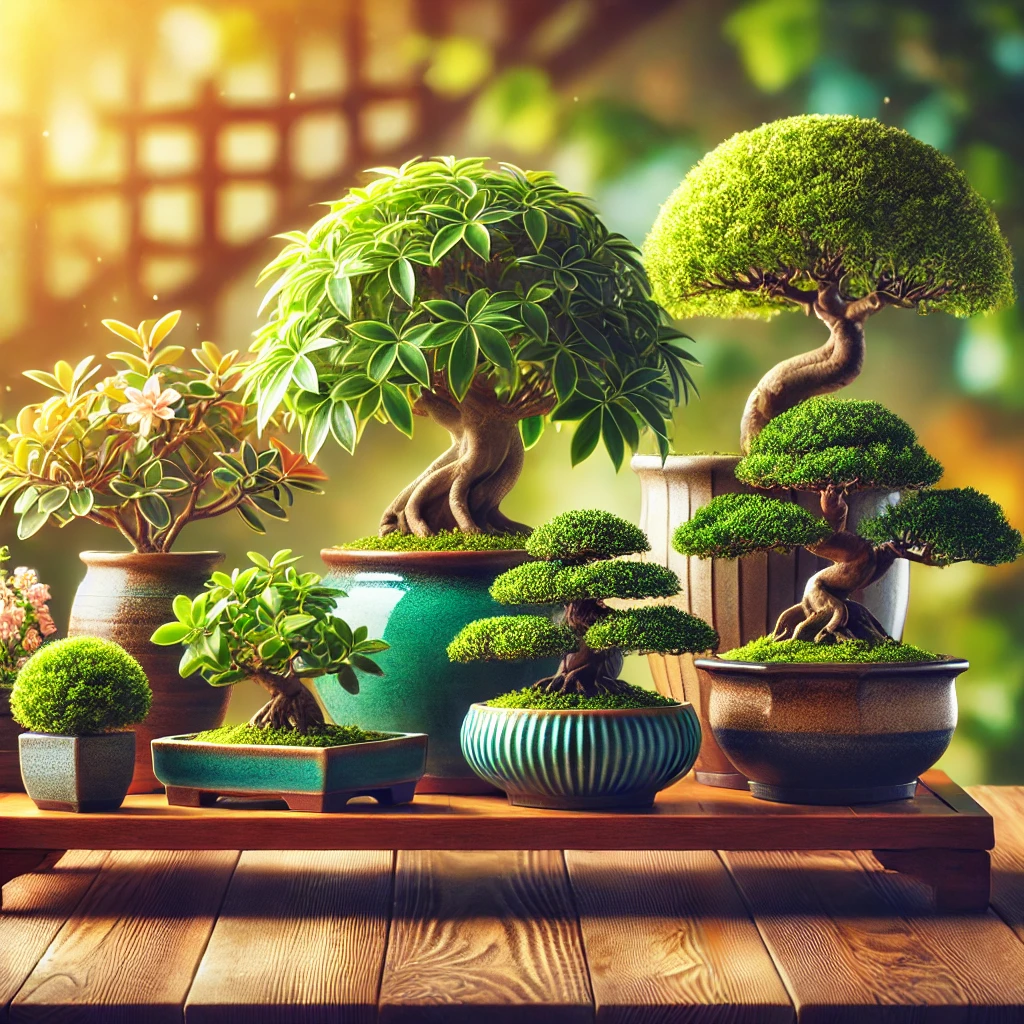The desire to have fresh produce at your fingertips, especially herbs, is a dream of every home chef. Is it your dream too? If yes, then this article is going to fulfil your dream by introducing you to 15 kitchen plants you will love.
Often, the kitchen is overlooked when it comes to adding greenery. However, it’s the best place to grow plants that enjoy a steamy environment.
Having plants in your kitchen not only adds colour but also purifies the air and provides fresh veggies year-round.
However, there is a problem with the kitchen space. Considering that the kitchen is cramped, indoor plants might be difficult to place. Nevertheless, hanging kitchen plants can be a good solution to this problem.
Also, don’t worry, if you have a busy schedule. Some plants such as snake plants and ZZ plants thrive on neglect.
Since the kitchen sink is nearby, you have no excuse not to water your plants. Moreover, you can grow even more amazing low-maintenance plants in your kitchen.
For every corner of the kitchen, there is a list of low-maintenance hanging plants and herbs. Let’s take a look at them.
Best Kitchen plants to grow in India
There is a long list of plants you can grow in the kitchen. From mint to basil to make fresh dips to coriander to make spicy chutneys, you can grow anything you want.
Below, I have listed the top 15 easiest and tastiest kitchen plants that you can grow in India

1. Basil (Tulsi Plant)

It’s no secret that basil improves the taste of cooking. Plus, it is easy to grow. Vastu considers it an auspicious plant that creates positivity. Sun-loving basil plants are best placed on windowsills facing south.
2. Lemongrass
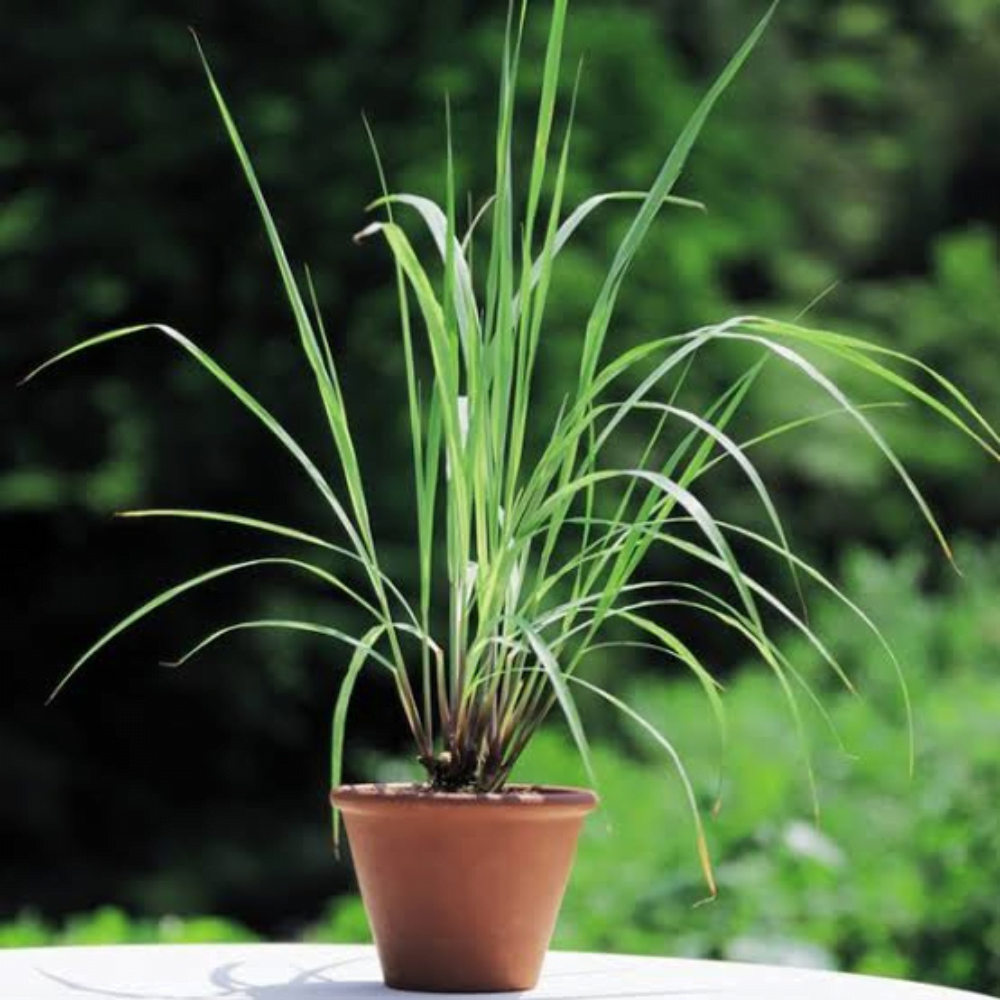
Look at those long green stalks! they will make your kitchen look rustic and beautiful. Its sweet, citrusy and tangy flavours of Indian cuisine benefit many dishes. The lemony aroma of lemongrass is also antimicrobial, antibacterial, and antiseptic.
3. Mint
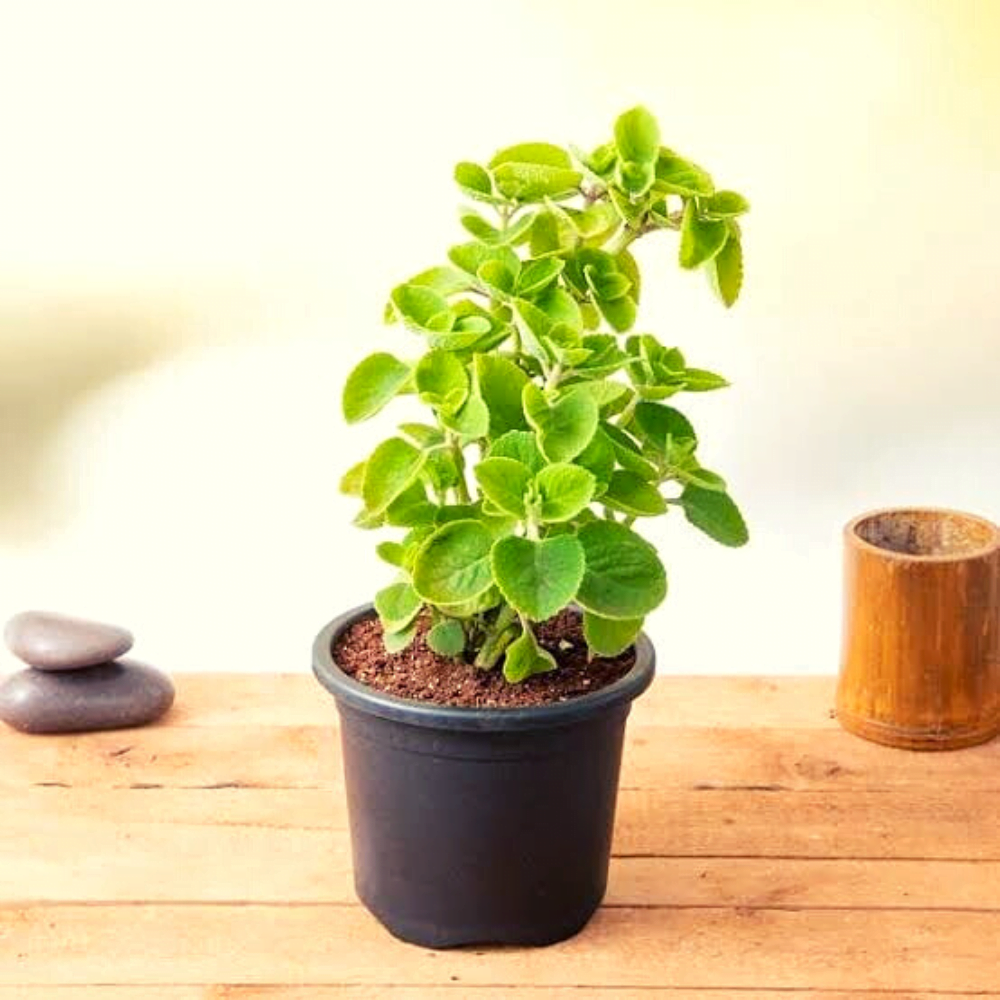
You can add beauty to your kitchen with the mint plant’s purple, pink, and white flowers. For mint plants to thrive, they need moist, well-drained soil. Iced teas, sherbets, pudina lases, and soothing raitas are delicious with mint.
4. Aloe vera

With the gel-like substance of aloe vera, you can heal minor burns quickly. The leaves also contain anti-inflammatory compounds that promote skin healing. So, why not keep Aloe vera on your window sill as a small kitchen plant?
5. Snake plant
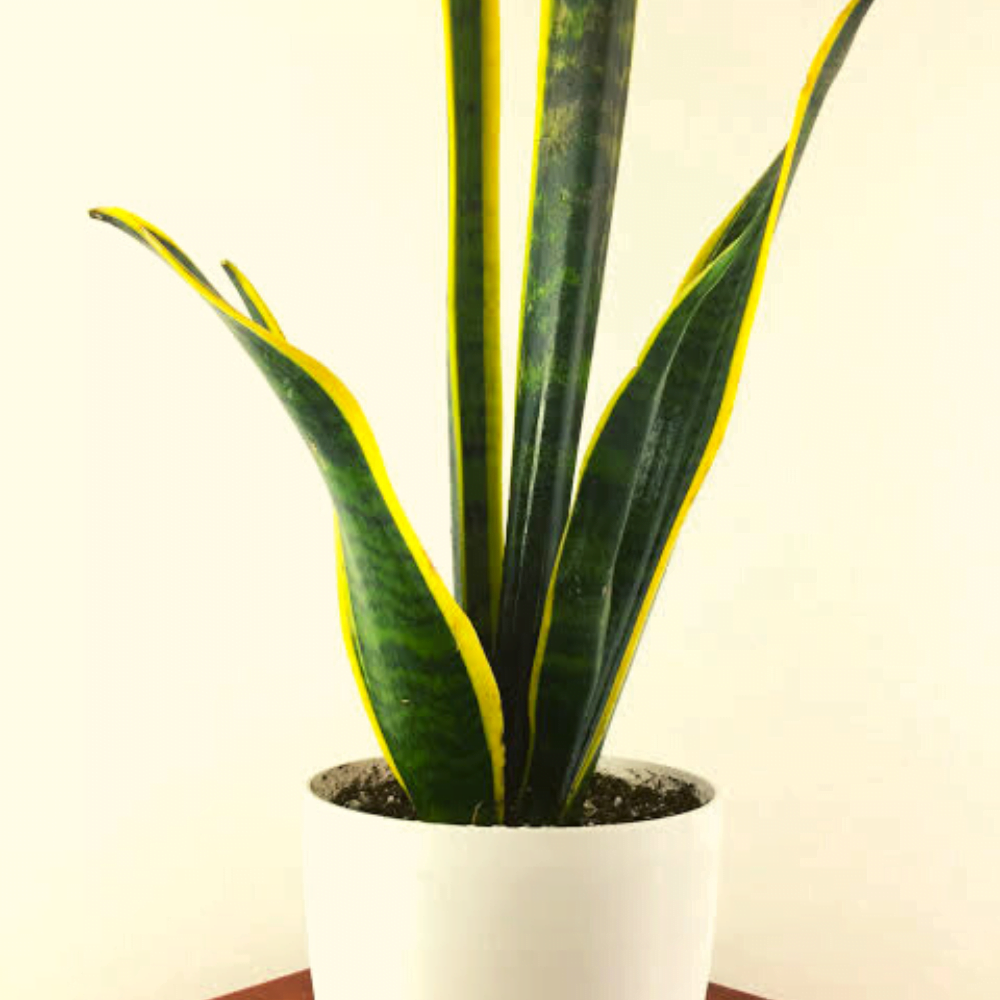
The plants that require a lot of care cannot survive in a busy kitchen. This is when snake plants come to your rescue. They can adapt to different lighting conditions and thrive without watering. In any corner of your kitchen, snake plants will look great with their tall leaves.
6. Curry plant

Tadkas in India is incomplete without curry leaves. Cooks commonly use curry leaves with mustard seeds, chillies, and bay leaves. This plant requires no maintenance, not even watering. It only needs warm weather and well-drained soil to grow curry leaves.
7. Rosemary

Create a naturally scented environment in the kitchen with rosemary. With rosemary plants in your kitchen, you can enjoy their aromatic flavour of them while working. A kitchen corner looks great with rosemary needles. It is also one of the easiest plants to maintain.
8. English ivy

Have you considered hanging kitchen plants? You will love the look of this hardy, yet beautiful English ivy plant. Adaptable to a variety of lighting conditions, ivy makes a great hanging kitchen plant. Such trailing vines make beautiful hanging plants or basket plants.
9. Pothos

Like English ivy, this vining plant with green, shiny leaves is a good choice for the kitchen. In a kitchen, this plant can be displayed without occupying valuable counter space. You can certainly choose pothos if your kitchen cabinet is empty. Low light is okay for Pothos.
10. Parsely (Coriander)
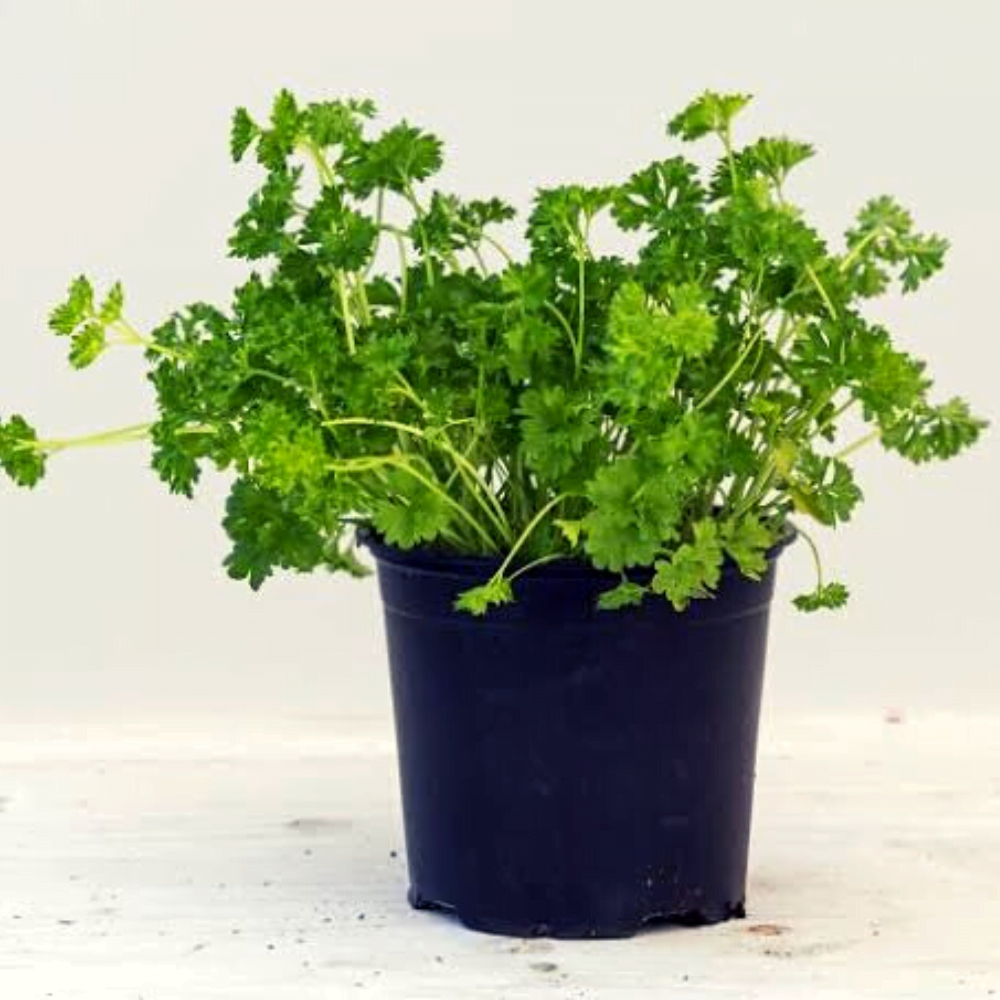
One of the most popular indoor herbs is parsley. The herb is commonly used as a garnish and as an ingredient in many recipes. The herb also contains antioxidants and vitamins and aids digestion. Indoors, parsley grows well on sunny windowsills.
11. Spider plant

You don’t need a lot of care for spider plants. Whether you grow them inside or outside, spider plants are easy to grow. It looks great on the windowsill, on the kitchen cabinet, or hanging. It purifies your home’s air, making it a healthy addition.
12. Heartleaf philodendron

Low-maintenance Heartleaf Philodendrons look wonderful in hanging baskets. Easily cared for and beautiful all year round, the plant is a popular houseplant. Its dark green leaves emerge bronze-coloured at first, giving it an interesting appearance. Flowers may occasionally appear on mature plants.
13. ZZ plant

If you have a brown thumb, this plant is perfect for you. No matter how neglected it is and how little light it gets, this houseplant still looks great. Low-light and bright-light conditions are not a problem for it, since it is very adaptable. ZZ plants require very little water since they grow from rhizomes!
14. Prayer plant
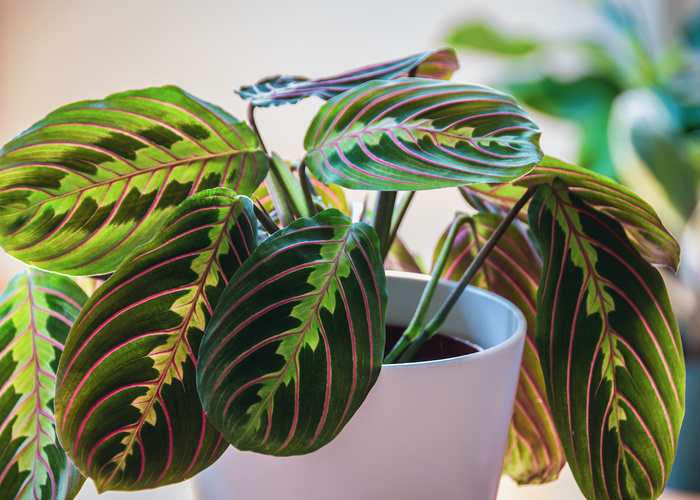
Featuring pink veins and dark and apple-green markings, prayer plants’ leaves look like they have been hand-painted. To create a striking display, keep the stems raised in an elevated position in a hanging basket during the night when the foliage folds up.
15. Chillies
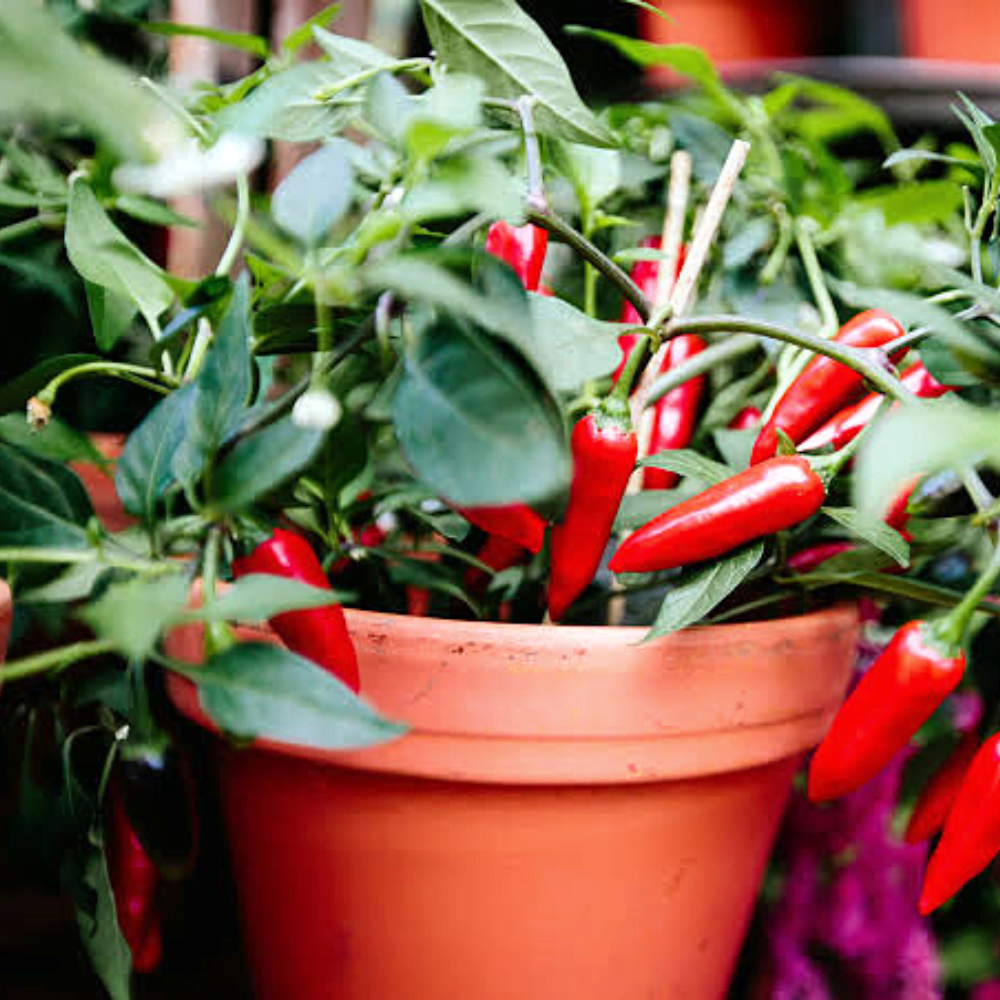
It’s a waste of money to buy chillies when you can simply grow them in the kitchen. It is fun and cost-effective to grow chillies on a windowsill – they will produce fruit most of the time. It looks great on a kitchen cabinet or window as a cute, little plant.
These are the best kitchen plants that you can grow easily. Learn more about them below to keep them flourishing
1. Basil (Tulsi Plant)
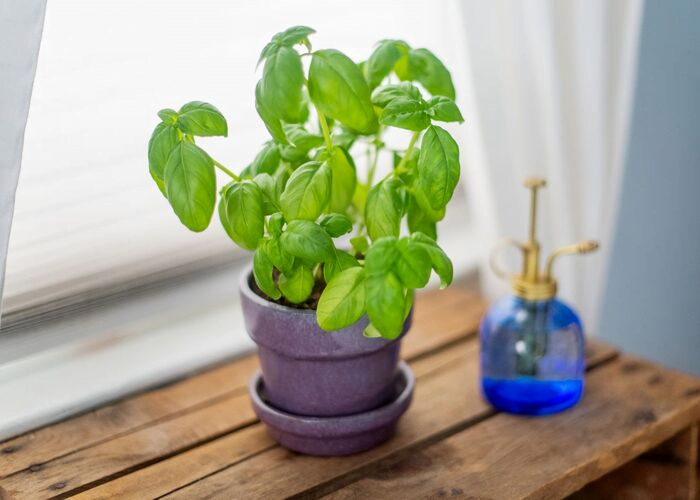
The best way to improve the taste of cooking is to grow herbs in the kitchen. However, there are many herbs you can grow in your kitchen, but basil is one of the easiest.
Just remember that it likes plenty of sun, dislikes cold, drafty spots, and prefers moist soil. Ideally, you should place this plant in a kitchen window that faces south.
In Vastu, basil plants are auspicious kitchen plants that create positive vibrations. Aside from its medicinal properties and numerous health benefits, Basil plants also relieve stress.
2. Lemon grass

A tropical climate, such as India, is best for growing lemongrass. Your kitchen will look rustic and beautiful with the long green stalks, which are mostly 4-5 feet long.
As a medicinal herb and a culinary ingredient, it is widely used. Indian soups, sauces, and salads benefit from their tangy, lemony flavour.
Also, lemongrass has a beautiful lemony scent, as well as antimicrobial, antibacterial, and antiseptic properties. It is easy to grow lemongrass from seeds using cutting or cultivation methods. There is no need to water the plant frequently and it only needs moderate sunlight.
3. Mint

It has a beautiful purple flower, pink flower, and white flower that is highly fragrant. A moist, well-drained soil is ideal for mint plants.
Mint’s natural cooling properties make it an ideal addition to teas, sherbets, and pudina lattes.
Keeping the plant in shade and protecting it from the sun are its two main requirements. Every few months, fertilize your plants for the best growth.
4. Aloe vera
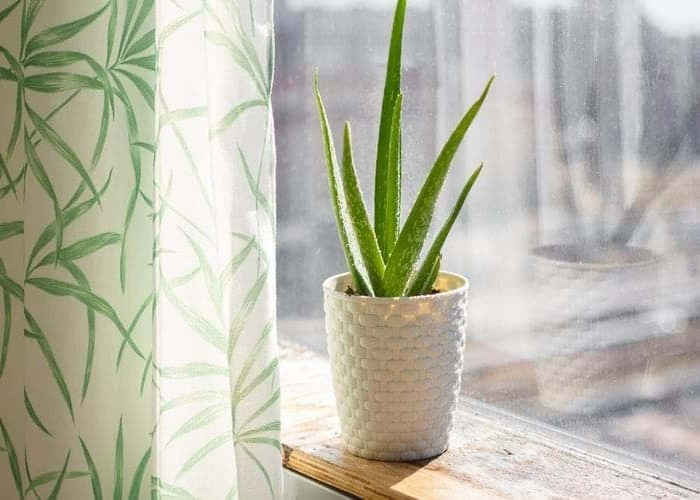
Burned yourself doing kitchen work? Grab an aloe vera leaf growing in your kitchen and pinch off its outer leaf. In aloe vera, there is a gel-like substance that helps heal minor burns.
Moreover, compounds present in the leaves have anti-inflammatory properties that promote skin healing. So, on your window sill, shouldn’t Aloe vera be the perfect kitchen plant?
Considering aloe vera’s love for bright light, your kitchen window is the perfect spot to grow it. Aloe vera kitchen plants don’t like being soaked too often, so water them sparingly.
5. Snake plant
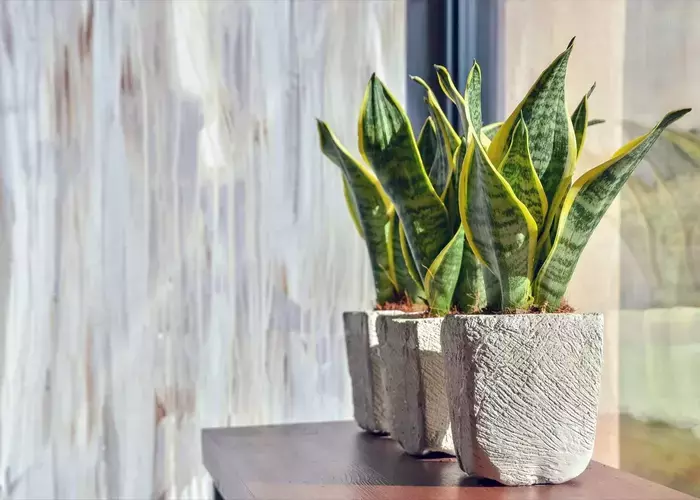
If your kitchen is busy with kids running around and the phone ringing, a plant that requires lots of care isn’t a good idea. You can turn to the snake plant for help in this situation.
When you don’t pay attention to snake plants, they do their best. Sounds weird, doesn’t it? However, snake plants indeed grow without much need for water and they definitely don’t need much light.
Additionally, you can place this plant in any corner of your kitchen. Taller than wide, it doesn’t take up much space.
6. Curry plant
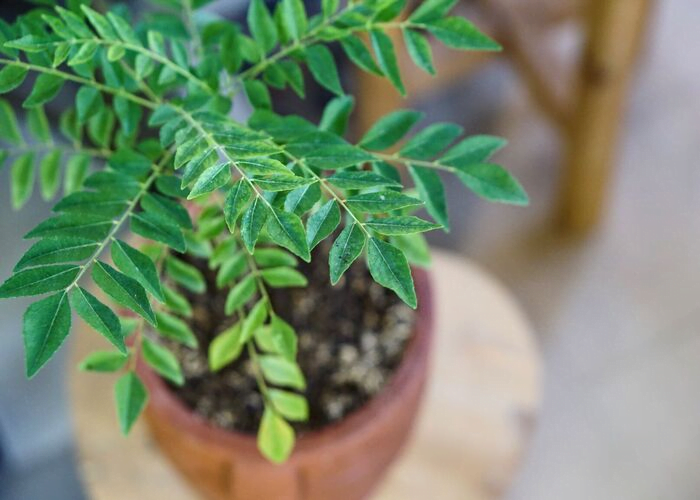
The Curry plant is a native Indian plant that’s pretty hardy. Usually mixed with mustard seeds, chillies, and bay leaves, curry leaves play an important role in everyday cooking.
This plant requires no maintenance, not even in terms of watering or soil conditions. Generally, curry plants thrive in warm climates and require well-drained soil.
From seeds, this plant can be propagated easily, and it doesn’t require much water.
7. Rosemary
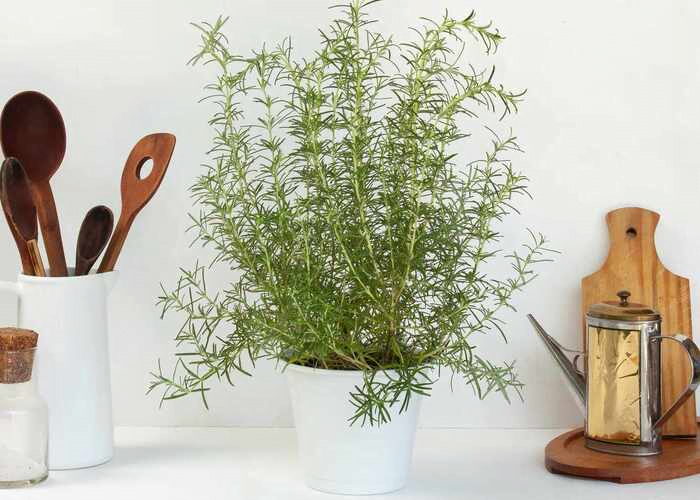
When it comes to creating a naturally scented environment, rosemary is the plant for you. So, while you work in your kitchen, you can enjoy the aromatic flavour of rosemary plants.
Additionally, rosemary needles look great in any corner of the kitchen. In addition to being good for aromatherapy, rosemary is also good for natural cleaning.
Plants like Rosemary are hardy plants that do not require much upkeep or care. As soon as the plant is potted and set, it needs minimal watering and grows quite fast.
For this plant to thrive, it needs to be kept in a well-lit area of the house. Thus, if you plan to keep a rosemary plant in your kitchen, place it in a bright corner.
8. English ivy

Is hanging kitchen plants something you would like to have in your kitchen? Bring this hardy, yet beautiful-looking English ivy plant home.
Ivy’s ability to adapt to various lighting conditions and its trailing nature make it a perfect hanging kitchen plant.
These beautiful trailing vines make awesome hanging plants or basket plants. So if you don’t have much space in your kitchen, consider English ivy.
It doesn’t matter if you have low light in your kitchen, english ivy will still do well. If you are watering your English ivy, be sure to let it dry out before watering again.
9. Pothos
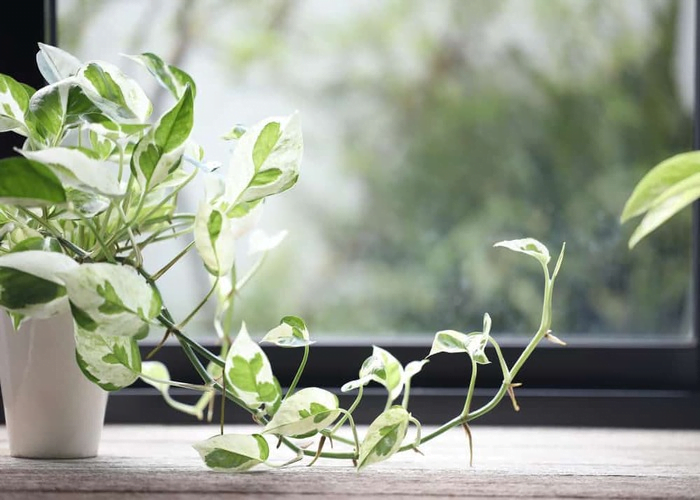
After English ivy, pothos is another good option. This vining plant with green, shiny leaves makes a good choice for the kitchen, just like English ivy.
An ideal place to hang this plant is in a kitchen, where it doesn’t take up valuable counter space. Nevertheless, if you have an empty cabinet in your kitchen, pothos is definitely a good choice.
Despite its preference for moderate light, Pothos can cope with low light as well. It is best to let pothos dry out between waterings.
10. Parsely
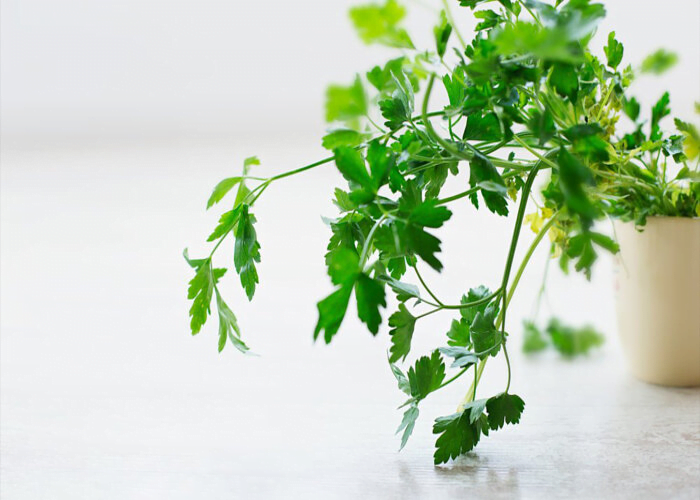
Among the herbs you can grow indoors, parsley is an excellent choice. It’s popular as a garnish and an ingredient in many recipes.
Moreover, it helps with digestion and breath freshening, as well as being rich in antioxidants and vitamins. A sunny windowsill is a great place to grow parsley inside your kitchen.
No doubt, indoors, parsley does extremely well under brightly lit conditions. Keep the plant in a pot with good drainage so water can easily pass through.
To prevent root rot, the soil must be moist. It would be best if you grow parsley indoors from seeds.
11. Spider plant

When it comes to spider plants care, less is more. It doesn’t take a green thumb to grow spider plants inside or outside.
Spider plants are versatile houseplants that grow easily. Whether on the windowsill, on the kitchen cabinet, or as a hanging plant, this plant makes a statement anywhere.
Additionally, the Spider Plant has air-purifying properties, making it a healthy addition to your home.
Also, spider plants thrive in a range of conditions, whether they are shady or sunny. It is only necessary to water them to keep them healthy. Moreover, it’s easy to propagate, making it worth your money.
12. Heartleaf philodendron
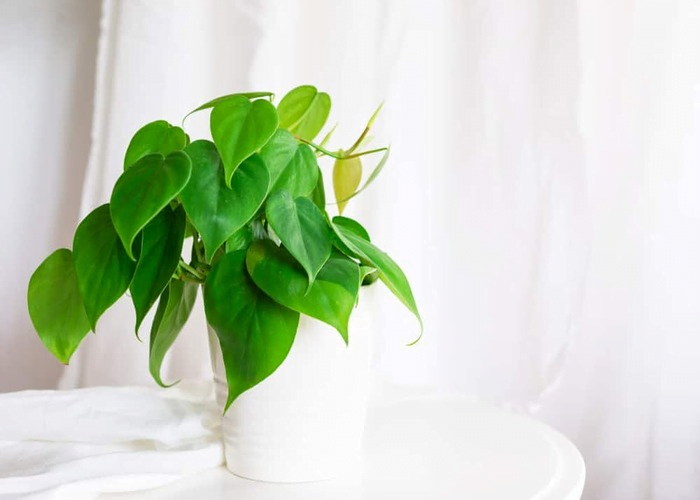
The Heartleaf philodendron is a low-maintenance houseplant that looks wonderful in hanging baskets.
The plant is a popular houseplant because of its beauty all year long and ease of care. This dark green plant with bronze leaves gives plenty of interest at first. A mature plant may occasionally produce small greenish-white flowers.
Similarly to pothos, they grow in bright or medium indirect light and are relatively drought-tolerant. In addition to being beautiful and colourful, these foliage plants are excellent air purifiers.
13. ZZ plant
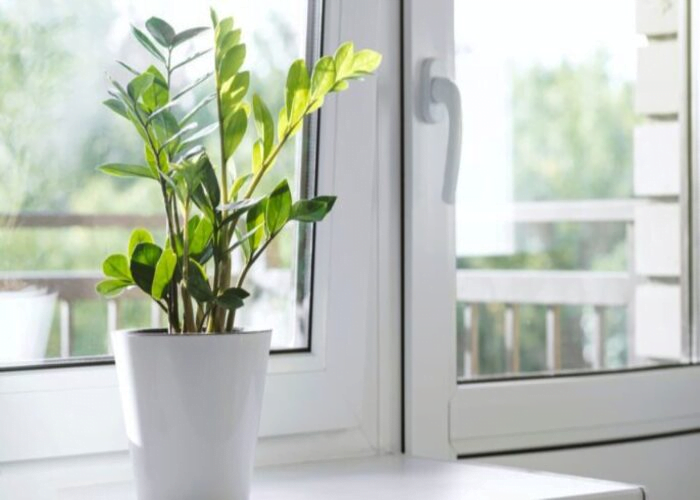
Known as the “Zanzibar gem,” a ZZ plant is one of the easiest kitchen plants to grow. As a result, the ZZ plant is perfect for those with the ultimate brown thumb.
With months of neglect and low light, this virtually indestructible houseplant will still look great.
It’s very adaptable and can live in low-light or bright-light conditions. Because they grow from rhizomes, they don’t need much water!
14. Prayer plant
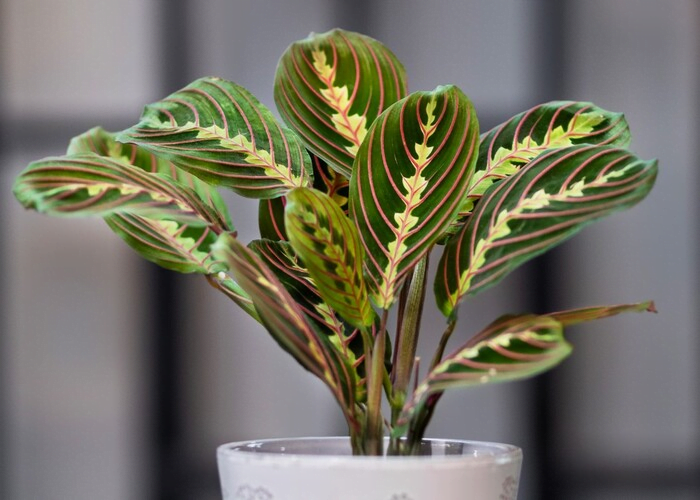
With pink veins overlaid with dark and apple-green markings, prayer plant leaves look like they have been decorated by an artist.
As the foliage folds up at night, it is called a prayer plant. As they mature, the stems can trail, so keep them elevated in a hanging basket to make a striking display.
When placed in a bright, humid area out of direct sunlight, a prayer plant can thrive in the humid atmosphere of the kitchen.
15. Chillies
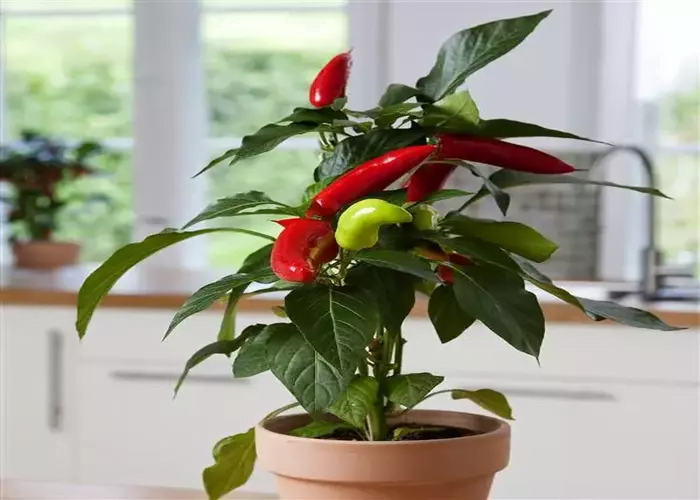
There’s no need to buy chilies when you can grow your own easily in the kitchen. On a windowsill, growing chilies is fun and will save you money – they will produce fruit year after year.
On a kitchen cabinet or in a window, the Chilli plant looks great as a cute, little plant with green leaves. It will reward you with lovely little chillies in a few months if you water it once or twice a week.
What are the Vastu benefits of kitchen plants?
Old Indian architectural belief, Vastu Sastra has pointed out the benefits of plants in the kitchen, which is focused on harmonizing nature and human habitation.
Reversing negative energy:
Plants that are known for absorbing toxins from the air are best for keeping in the kitchen as well. According to Vastu along with purifying the air, they absorb negative energy as well. By neutralizing the bad energy they bring positivity and calmness as well.
Boost prosperity:
Plants that have symbolic meanings, like money plant, thrives well inside the kitchen without any complaints. So, according to Vastu keeping one of these plants will bring prosperity in the house.
Balance elements:
According to Vastu, every element has symbols. As the kitchen is full of fire elements, it symbolizes fire. To balance things out placing a tree that symbolizes earth will create a great harmony.
The benefits of keeping plants in the kitchen:
You don’t need to buy any herbs:
Producing herbs like basil, rosemary, and mint in your kitchen space supplies easy access to new components while cooking. Freshly harvested herbs add rich flavors and nutritious value to your meals. Also, other than herbs you can grow chilly as well, to spice up your cooking (literally).
They are aromatic:
Specific kitchen plants, such as eucalyptus, discharge pleasing aromas that can freshen up the atmosphere in your kitchen. The scent can also have a soothing effect on your senses.
Makes indoor climate pleasing:
Plants remove moisture via a method known as transpiration. This can improve humidity levels in arid indoor conditions, Kitchens are usually humid, but in winter it can be dry, so keeping plants in the kitchen makes it more relaxing, especially during winter months.
Keep pests away:
Some plants, like snake plants, rosemary, and mint, have natural insect-repelling effects. By positioning these plants in your kitchen, you can help prevent typical kitchen pests such as flies or ants. We know how bothersome they can be.
Gives an oxygen boost in the kitchen:
Most kitchens, especially in Indian households are small and have less air circulation. This environment creates a suffocating environment for the ones who cook. The gas stoves we use for cooking consume lots of oxygen, so having plants that thrive in the kitchen can practically increase the oxygen level and create a healthy environment for people who spend hours in there.
Aesthetics:
Kitchen plants add a splash of greenery and raw magnificence to your kitchen area. They create a relaxing and alluring surrounding that can make your kitchen a more pleasant place to spend your time in there.
FAQs
Q1. Is it OK to put plants in the kitchen?
Ans. Certainly, growing plants in your kitchen enhance its beauty and have some practical applications as well. A kitchen plant also adds a splash of color, purify the air, and is a source of fresh produce all year long.
Q2. Can I put plants above my kitchen cabinets?
Ans. Yes, plants above cabinets remain in style for a long time. Furthermore, plants such as English ivy, spider plants, and philodendron are easy to care for and add style to your kitchen.
Q3. Which plant is good for the kitchen as per Vastu?
Ans. The Tulsi plant (Basil) is always recommended by Vastu in the kitchen. Make sure you put it on the bright side of your kitchen since Tulsi thrives in plenty of sunlight.
Q4. Where Should I put plants in my kitchen?
Ans. The best place to grow kitchen plants is on the windowsill. The kitchen plants prefer bright light, and the windowsill is the best place for them to receive that light.
Conclusion
As you can see there are a wide variety of plants that you can grow in the kitchen. When it comes to herbs, basil, mint, and lemongrass are the best. And don’t forget curry leaves most Indian tadkas are incomplete without them.
For a small kitchen space, I recommend you go for English ivy, trailing pothos, and philodendrons. Your eyes will be captivated by these plants’ beauty. Chilli plants are your best bet if you like spicy food.
You can fill your empty cabinets with spider plants, snake plants, ZZ plants, and rosemary if you have empty cabinets. Furthermore, you won’t have to spend your valuable time taking care of these plants.
Also, do not worry if you burn yourself in the kitchen or hurt yourself by working in it. Aloe vera will help you heal simply by squeezing some gel from it. So, add these kitchen plants today and upgrade your cooking experience.
Did I miss any plants you recommend that can be grown in the kitchen? I would love to hear what you think about kitchen plants that can be grown in India. Don’t forget to share this article with anyone looking to upgrade their kitchen.
Related Articles
- 15 Best Plants for Front Door Entrance India | Auspicious plants for front door
- 10+ Money plant Benefits That Will Make you Keep It In Your House
- Are Spider Plants Toxic to Cats?- 4 Ways To Prevent Your Cats From Eating Spider Plants.
- Best Plants for the House – 8 Top Apartment Plants That You Can’t Miss
- How to Braid Your Snake Plant: Tips and Care Guide
- 20+ Rare and Unusual Peace Lily Varieties You’ll Love

